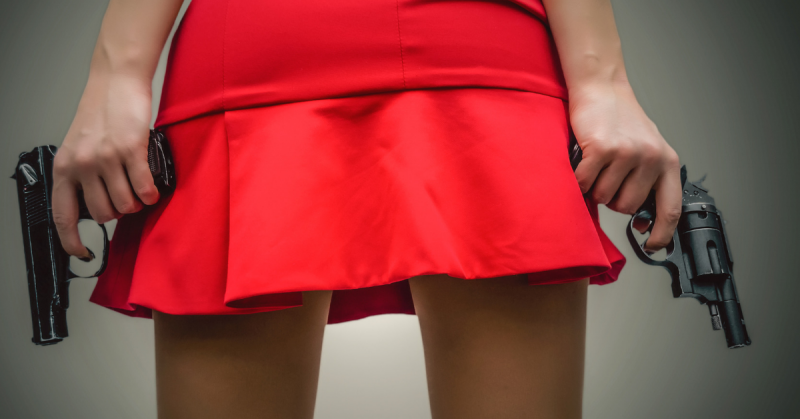The first use of hand cannons in Europe is credited to the Hussites during the Bohemian revolution. Their efficacy in battle changed European warfare a great deal. The resulting effect was the development of handguns in the 15th century. Subsequently, the more refined pistol came into existence in mid-16th century in Europe.
As the medieval era fizzled out, so did most of its weaponry. The use of swords, maces, axes, and spears, etc were replaced by guns. The discovery of black powder by the Chinese in the 9th century was very instrumental to this change and by the 10th century, the Chinese military was all over this new product.
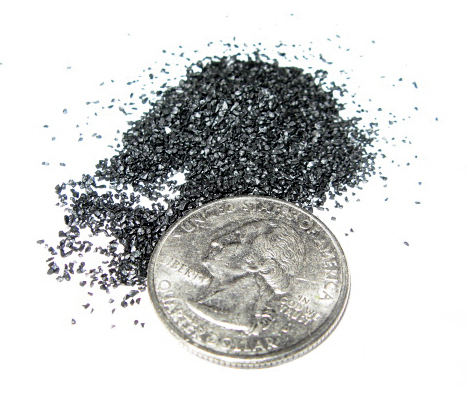
Chinese alchemists, in their quest for the elixir of life, generated a “powder of death” which would shape the future of military weaponry. The formula for gunpowder, which was generated in the 11th century, owes its roots to the black powder accidentally discovered in China. This discovery set the stage for the first hand cannons created in the 13th century.
The origin and definition of the pistol has often been disputed by historians around the globe. However, the definition provided by the United States Bureau of Alcohol, Tobacco, Firearms and Explosives (ATF) throws light on what kind of weapon should be regarded as an actual pistol.
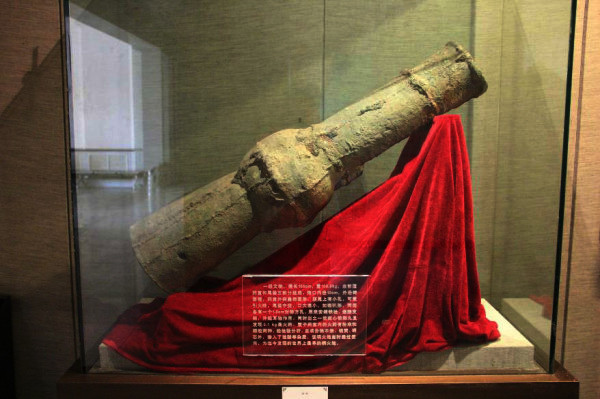
The ATF concludes that a pistol is a weapon with a design that allows it to fire a projectile while it is being held with one hand with a chamber(s) as an integral part(s) of, or permanently aligned with, its bore(s).
The account that the word “pistol” was coined in the 16th century from the city of Pistoia in Tuscany, Italy, where a popular gunsmith named Camillio Vettelli resided, is widely disputed among historians. This is due to the earlier use of the Czech word píšťala meaning flute, which was employed as a description of the hand cannons used during the Hussite Wars.
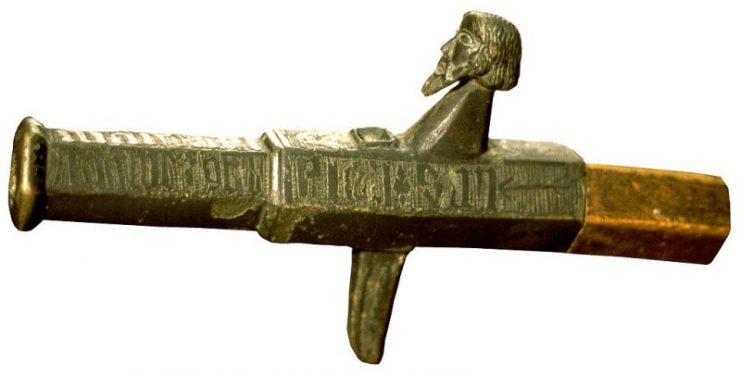
However, the idea behind the production and use of the pistol at that time was pretty basic. It was made as a side arm and its lightweight, smaller size, and close range use were all attestations to that effect. Essentially, its intended use was as a back-up to a primary, usually larger, weapon.
The first pistol is considered to be the wheel lock pistol for it made the idea of a one-handed gun conceivable. It was created, more or less, as an upgrade from the matchlock. While the latter was operated by burning a slow match, the more sophisticated wheel-lock system was self-igniting.
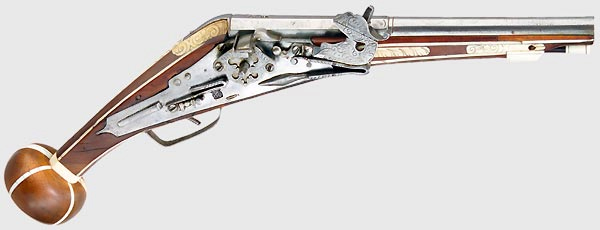
The use of fool’s gold (pyrite) against the wheel of the gun as it spins creates a spark which ignites the gunpowder. The pyrite is clamped to the doghead of the gun and lowered into the priming pan when it is to be fired. As the trigger is pulled, the pan cover is flung open while the wheel is spun simultaneously, exposing the powder to the spark generated by the pyrite and the spinning wheel.
The first use of wheel lock pistols was by men-at-arms in Europe. The pistol effectively eradicated the use of lances which, by that time, were still commonplace as cavalry weaponry. François de la Noue, a famous Huguenot Captain of the 16th century, remarked that killing the enemy by using a lance was nothing short of a miracle.
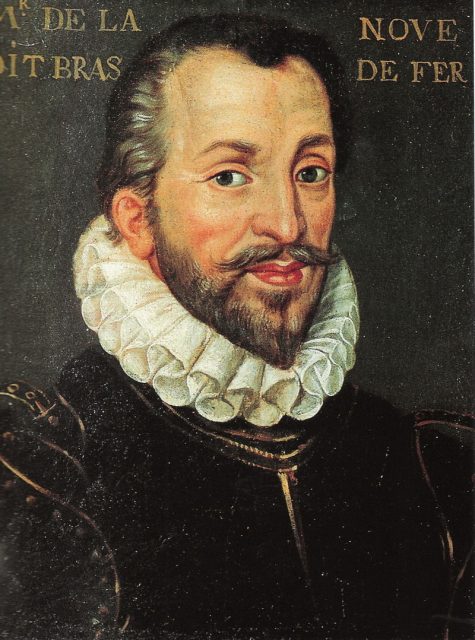
The spike in the use of plate armor in the 15th and 16th century wars had significantly reduced the effect of lances. Yet just as one protective measure was being adopted, a more offensive weapon was created to counter it. The pistol made the lance look like a toothpick being compared with a knife in terms of its deadliness.
Most appealing was the ability of pistols to be easily concealed. Combined with their effectiveness from some distance out, they essentially rendered plate armor useless. The pistols easily penetrated the well sought-after iron and steel suits and, by the end of the 16th century, having pistols was a necessity for an efficient militia.
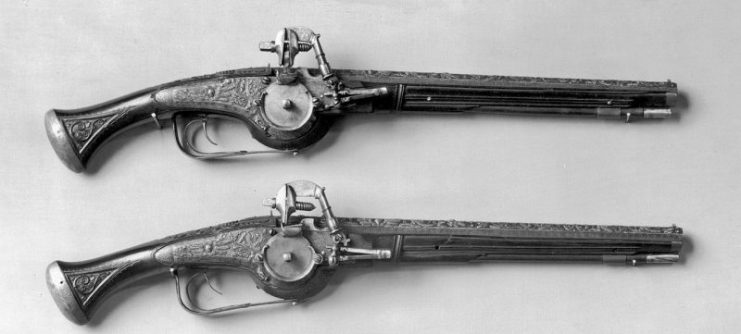
The Battle of St. Quentin in 1557, during the Last Italian War, featured the use of pistols. The men bearing such arms were regarded as Pistoleers. Men who were skilled in the use of the wheel lock found that their services were almost priceless.
Over the years, wheel lock pistols gave way to the flintlock. This model was developed in the early 17th century and would last uncontested for almost 200 years. Then, in the early 19th century, it was succeeded by the caplock pistol following the invention of the percussion cap by Scottish Presbyterian clergyman and gunsmith, Alexander John Forsyth, in 1807.
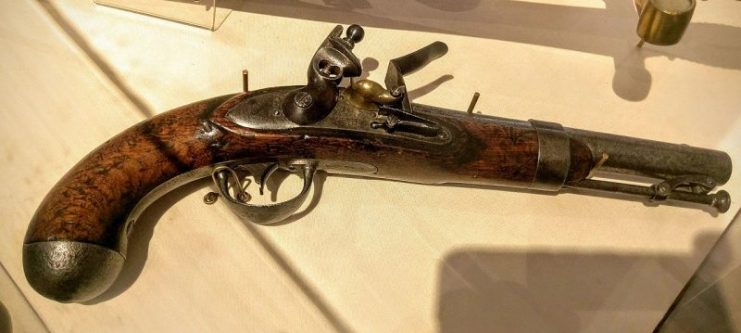
Forsyth developed the percussion cap as a means to prevent the smoke from his flintlock gun startling the birds at which he was aiming. His invention allowed him to fire at birds without warning, leaving less time between the sound of the shot and the actual impact. The widely used caplock pistols were, however, only developed after Forsyth’s patents had expired.
Pistols saw mass production later on in 1836 when Samuel Colt patented the 5-shot Colt Paterson revolver, a multi-shot revolver which operated using the percussion cap system. Although his gun was an adaptation of an earlier piece – a flintlock revolver invented by Elisha Hayden Collier in 1814 – the Colt gained more widespread recognition because of the use of the percussion cap.
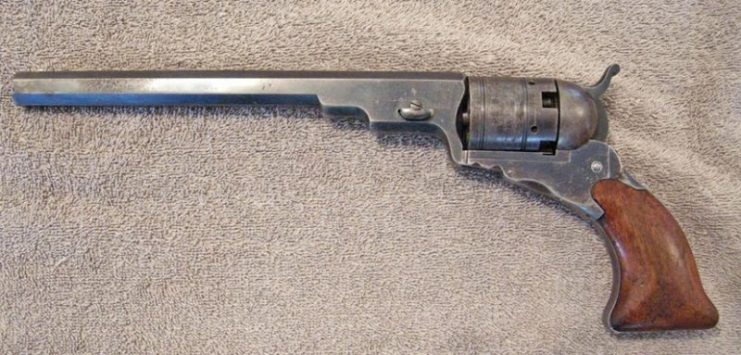
Read another story from us: Unique Cache of Antique Weapons Discovered in Canal
By 1837, over 1,000 Colt revolvers had been produced, but they were not in very high demand at the time. However, the Colt found its first military action in the Second Seminole War in Florida, and later on in the Mexican-American War.
Colt’s revolvers would give rise to an era of pistol masterpieces that would shape the events of many battles all around the globe. Now in wide circulation, the pistols have found use both with the military and civilians alike.
